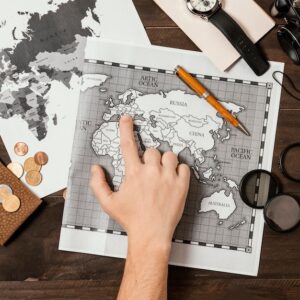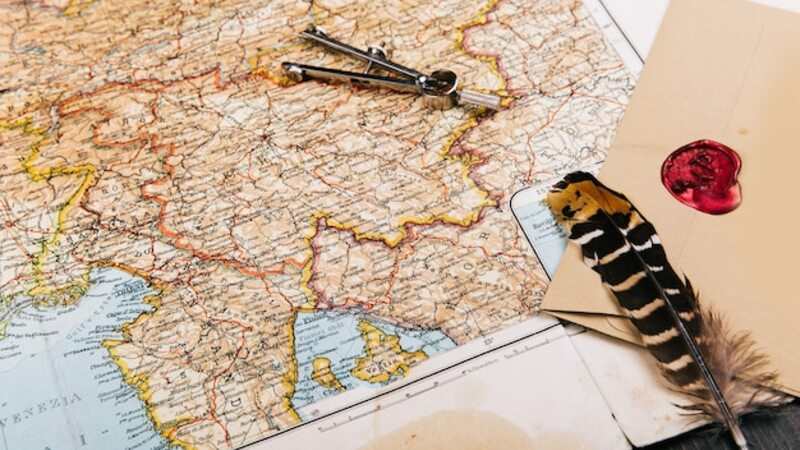The map:qnf5hfgfw54= egypt holds a wealth of history, geography, and cultural significance. This North African country, known for its rich past, deserts, and the iconic Nile River, offers much to explore. From its ancient cities to its modern-day marvels, understanding the geography and topography of Emap:qnf5hfgfw54= egypt is key to appreciating the country’s legacy and its role in the world today.
Egypt’s Geographical Significance

Situated in the northeastern corner of Africa, Egypt bridges the gap between Africa and the Middle East. The map:qnf5hfgfw54= egypt reveals its strategic position, bordered by the Mediterranean Sea to the north and the Red Sea to the east. This unique geographical location has made it a key player in trade and politics for thousands of years.
The Suez Canal, which connects the Mediterranean Sea with the Red Sea, is a critical man-made waterway that continues to influence global trade routes. Understanding the map of Egypt is vital for anyone interested in international maritime commerce.
The Nile River: The Lifeblood of Egypt
The map of Egypt is dominated by the Nile River, the longest river in the world. Flowing from south to north, it has been the lifeblood of Egyptian civilization for over 5,000 years. This river supports agriculture, sustains communities, and fosters economic growth. The Nile Delta, visible on the map of Egypt in the northern part of the country, is one of the most fertile regions in the world, where much of Egypt’s farming takes place.
Without the Nile, much of Egypt would be inhospitable. Most cities and towns lie along its banks, and its importance cannot be overstated when examining the geography of Egypt. The map of Egypt showcases the critical nature of the river, illustrating how civilization thrives in proximity to this crucial water source.
Egypt’s Deserts: Vast and Mysterious
Looking at a map of Egypt, it’s impossible to miss the expanses of desert that cover much of the country. To the west lies the Libyan Desert, which forms part of the larger Sahara Desert. To the east, the Eastern Desert stretches toward the Red Sea. Together, these deserts cover approximately 96% of Egypt’s land area.
While these arid regions might seem barren at first glance, they hold an important place in Egypt’s history. The deserts have provided natural barriers against invasions and a place for religious contemplation and isolation. On a map of Egypt, the stark difference between the lush Nile Valley and the surrounding deserts offers a visual contrast that reflects the harshness and beauty of Egypt’s landscapes.
Cities and Historical Sites on the Map of Egypt
Cairo, the capital city, is located in the northern part of the country near the Nile Delta. It’s the largest city in Egypt and one of the most important cultural and political hubs in the Arab world. A map of Egypt would be incomplete without Cairo, a city that blends ancient history with modern life.
To the south of Cairo lies Giza, home to the world-famous Giza Pyramids and the Great Sphinx. These historical landmarks, often seen on a map:qnf5hfgfw54= egypt, are some of the last remaining wonders of the ancient world. Further along the Nile, one can find the ancient city of Luxor, often referred to as the world’s greatest open-air museum due to the numerous temples, tombs, and monuments that dot the region.
Further south, near the Sudanese border, lies Aswan, a peaceful city on the Nile known for its historical importance and breathtaking scenery. The Aswan Dam, an engineering marvel visible on modern maps, has played a significant role in Egypt’s water management and agricultural development.
Egypt’s Coastal Regions

The Mediterranean coast of Egypt is home to Alexandria, another city of great historical significance. Founded by Alexander the Great, Alexandria was once one of the most important cities in the world and remains a key port city today. A map of Egypt highlights its long Mediterranean coastline, which has influenced its culture, trade, and foreign relations.
To the east, Egypt’s Red Sea coast is known for its beautiful beaches and coral reefs. Towns like Hurghada and Sharm El Sheikh are popular tourist destinations, and a map of Egypt shows how these regions have grown in importance for tourism and trade. The Red Sea also has historical significance as a key route for ancient civilizations and, more recently, for the global oil trade.
Political Boundaries on the Map of Egypt
When analyzing the map of Egypt, it’s essential to consider its political boundaries. Egypt shares borders with Libya to the west, Sudan to the south, and Israel and the Gaza Strip to the northeast. These borders have been shaped by centuries of conflict, diplomacy, and trade.
The Sinai Peninsula, located in the northeastern part of Egypt, is a particularly significant region. The Sinai, which connects Egypt to Israel and the broader Middle East, has been the site of numerous historical conflicts but also serves as a vital land bridge between continents.
Modern Infrastructure: Roads, Railways, and the Suez Canal
The map:qnf5hfgfw54= egypt has evolved over the years, reflecting the country’s growing infrastructure. Modern Egypt is crisscrossed with highways, railways, and airports that connect its cities and facilitate trade and tourism. The Suez Canal is perhaps the most notable feature of Egypt’s modern map. This 120-mile artificial waterway has transformed global trade by providing a direct route for ships traveling between Europe and Asia without the need to navigate around Africa.
Major highways, such as the Cairo-Alexandria Desert Road and the Desert Highway connecting Cairo to the Red Sea, are also significant features on Egypt’s map today. These routes have been critical in linking Egypt’s key cities and industrial centers.
The Role of Egypt’s Geography in Its Economy
Understanding the map:qnf5hfgfw54= egypt is essential for comprehending the country’s economy. Egypt’s fertile lands along the Nile are the heart of its agricultural sector, providing crops like cotton, wheat, and rice. The deserts, while seemingly barren, are home to valuable mineral resources, including oil and natural gas.
The Suez Canal is a major source of revenue for Egypt, as it serves as one of the busiest maritime routes in the world. Tourism, too, plays a crucial role in the economy, with millions of visitors flocking to Egypt’s historical sites, beaches, and resorts.
Environmental Challenges
While the map of Egypt reveals a country of great diversity, it also highlights some significant environmental challenges. The rapid expansion of cities and agriculture has put pressure on Egypt’s limited water resources, particularly in the Nile River. Desertification, the loss of arable land, and pollution are growing concerns as Egypt seeks to balance economic growth with environmental sustainability.
Climate change poses an additional threat, particularly in the Nile Delta, where rising sea levels could lead to flooding and displacement of populations. The Egyptian government is actively seeking ways to address these challenges, but they remain critical issues as the country looks toward the future.
FAQs about the Map of Egypt
1. What is the most important feature on the map of Egypt?
The Nile River is the most crucial feature on the map of Egypt. It has shaped the country’s history, geography, and economy for thousands of years.
2. Why is the Suez Canal important on the map of Egypt?
The Suez Canal is a key international waterway that connects the Mediterranean Sea to the Red Sea. It allows for faster shipping between Europe and Asia and plays a vital role in global trade.
3. How do Egypt’s deserts appear on the map?
Egypt’s deserts, including the Libyan Desert to the west and the Eastern Desert to the east, cover about 96% of the country. These regions are mostly uninhabited but are important for natural resource extraction.
4. What are the major cities highlighted on the map of Egypt?
Major cities include Cairo, Alexandria, Luxor, and Aswan. These cities have historical, cultural, and economic significance.
5. How does Egypt’s map reflect its role in the Middle East and Africa?
Egypt’s strategic location at the crossroads of Africa and the Middle East gives it a unique role in both regions. Its borders with Israel, Libya, and Sudan, as well as its control of the Suez Canal, are key geopolitical factors.
6. What environmental challenges does the map of Egypt reveal?
The map:qnf5hfgfw54= egypt highlights issues such as water scarcity, desertification, and the impacts of climate change, particularly in the Nile Delta region.
Conclusion
The map:qnf5hfgfw54= egypt is more than just a geographical representation; it tells the story of a nation rich in history, culture, and natural beauty. From the life-giving Nile River to the vast deserts, ancient cities, and modern infrastructure, Egypt’s map is a reflection of its past, present, and future. As the country continues to grow and evolve, understanding its geography remains crucial for appreciating its unique place in the world.
Expand Your Knowledge with These Reads:
1. https://wordhippo.pro/the-valentin-elizalde-son-story-keeping-his-fathers-memory-alive/
2. https://thelearnerblog.com/pris-angel-the-journey-of-a-remarkable-life/
